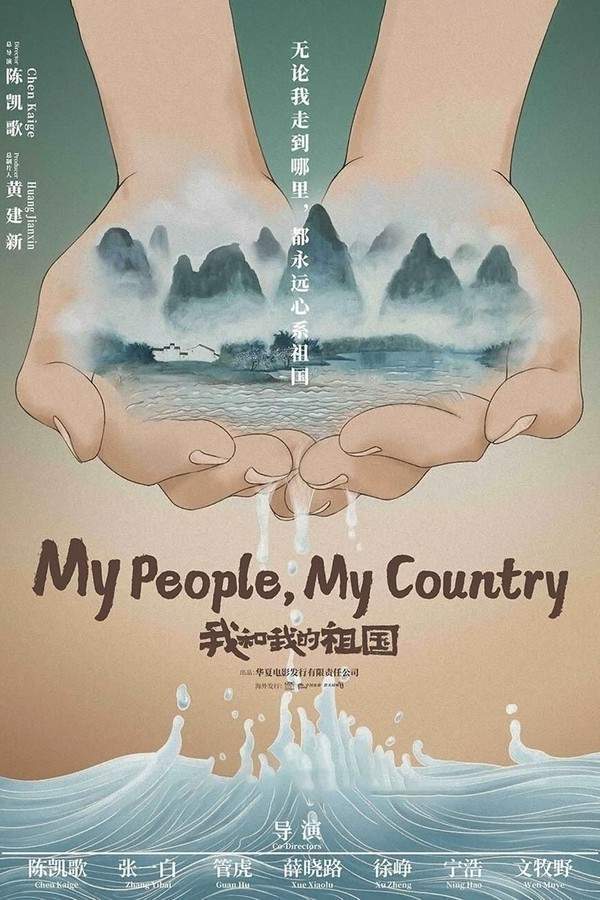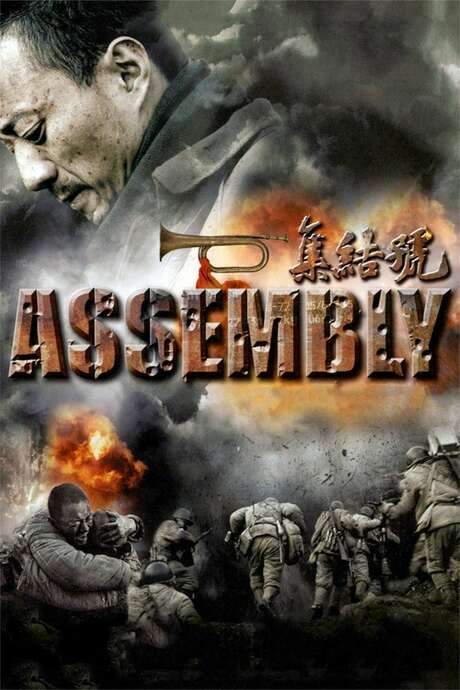Warning: spoilers below!
Haven’t seen The Founding of a Republic yet? This summary contains major spoilers. Bookmark the page, watch the movie, and come back for the full breakdown. If you're ready, scroll on and relive the story!
The Founding of a Republic (2009) – Full Plot Summary & Ending Explained
Read the complete plot breakdown of The Founding of a Republic (2009), including all key story events, major twists, and the ending explained in detail. Discover what really happened—and what it all means.
In August 1945, Japan announced its unconditional surrender, bringing eight years of resistance warfare to a close. Yet, national unification remained unfinished. The Kuomintang (KMT) claimed to hold the reins of the country, but its authority was uneven at best, while the Communist Party (CCP) had already built a strong political, military, and popular base in the areas it had liberated behind enemy lines. It was in this tense moment that Mao Zedong Tang Guoqiang and Chiang Kai-shek Zhang Guoli travelled to Chongqing to explore the possibility of a peace negotiation and a path toward a democratic nation. They were joined by supporters from the China Democratic League, led by Zhang Lan Wang Lan, who hoped to help broker a compromise. The stage was set for a high-stakes encounter that would shape China’s future for decades to come.
On October 10, 1945, the two sides signed the Double Tenth Agreement, a formal attempt to halt the civil war and to lay the groundwork for a multi-party government within a united China. In theory, the pact pledged to stop the fighting and to broaden political participation, but in practice deep-seated differences between the CCP and the KMT proved difficult to bridge. The mutual trust required for a true power-sharing arrangement never fully materialized, and by the following year the cooperation frayed as each side pressed its own path forward. As fighting paused, the CCP began consolidating power in liberated zones, while the KMT moved to reassert its control in other regions.
From July 1947 onward, the People’s Liberation Army shifted from a strategy of defense to offense in territories under KMT control, marking a turning point in the war and signaling the start of a broad push to liberate large parts of the country. In the political arena, Chiang Kai-shek convened a National Assembly in Nanjing, where he was elected president, with Li Zongren as his vice president Wang Xueqi noted as a rival inside the party. The CCP seized on these developments, and by May 1948 issued the May Day Declaration from Baoding, Hebei, calling for the prompt convening of a Political Consultative Conference and the establishment of a People’s Congress to realize a democratic coalition government. The move helped broaden a democratic united front, drawing in partners such as the China Democratic League and other political actors, alongside influential figures like Zhang Lan, Soong Ching-ling Xu Qing, and Li Jishen Jin Xin.
As CCP victories mounted across central and southern China, the political momentum shifted decisively. Chiang Kai-shek was compelled to resign as president, and his forces retreated to Taiwan in December 1949. The political pulse of the country culminated with the First Plenary Session of the Chinese People’s Political Consultative Conference in Beijing on September 21, 1949, followed by Mao’s proclamation of the founding of the People’s Republic of China on October 1, 1949. Beijing, then commonly known as Beiping, was named as the capital of the new nation, signaling a historic transition to a new era. The war’s end brought a sweeping reorganization of China’s political map and established a socialist-leaning state apparatus that would define the country for decades to come.
Last Updated: October 09, 2025 at 10:53
Unlock the Full Story of The Founding of a Republic
Don't stop at just watching — explore The Founding of a Republic in full detail. From the complete plot summary and scene-by-scene timeline to character breakdowns, thematic analysis, and a deep dive into the ending — every page helps you truly understand what The Founding of a Republic is all about. Plus, discover what's next after the movie.
The Founding of a Republic Timeline
Track the full timeline of The Founding of a Republic with every major event arranged chronologically. Perfect for decoding non-linear storytelling, flashbacks, or parallel narratives with a clear scene-by-scene breakdown.

Characters, Settings & Themes in The Founding of a Republic
Discover the characters, locations, and core themes that shape The Founding of a Republic. Get insights into symbolic elements, setting significance, and deeper narrative meaning — ideal for thematic analysis and movie breakdowns.

Similar Movies to The Founding of a Republic
Discover movies like The Founding of a Republic that share similar genres, themes, and storytelling elements. Whether you’re drawn to the atmosphere, character arcs, or plot structure, these curated recommendations will help you explore more films you’ll love.
Explore More About Movie The Founding of a Republic
The Founding of a Republic (2009) Scene-by-Scene Movie Timeline
The Founding of a Republic (2009) Movie Characters, Themes & Settings
The Founding of a Republic (2009) Spoiler-Free Summary & Key Flow
Movies Like The Founding of a Republic – Similar Titles You’ll Enjoy
My People, My Country (2019) Film Overview & Timeline
The Founding of an Army (2017) Spoiler-Packed Plot Recap
Tiananmen: The People Versus the Party (2019) Film Overview & Timeline
Mao Zedong 1949 (2019) Full Movie Breakdown
The Warlords (2007) Detailed Story Recap
Assembly (2007) Detailed Story Recap
Bethune: The Making of a Hero (1990) Detailed Story Recap
The Big Parade (1986) Full Summary & Key Details
My Country, My Parents (2021) Movie Recap & Themes
The Birth of New China (1989) Ending Explained & Film Insights
My People, My Homeland (2020) Ending Explained & Film Insights
1921 (2021) Spoiler-Packed Plot Recap
The East Is Red (1965) Full Movie Breakdown
The Communist (1958) Full Summary & Key Details
The 400 Million (1939) Full Summary & Key Details


















